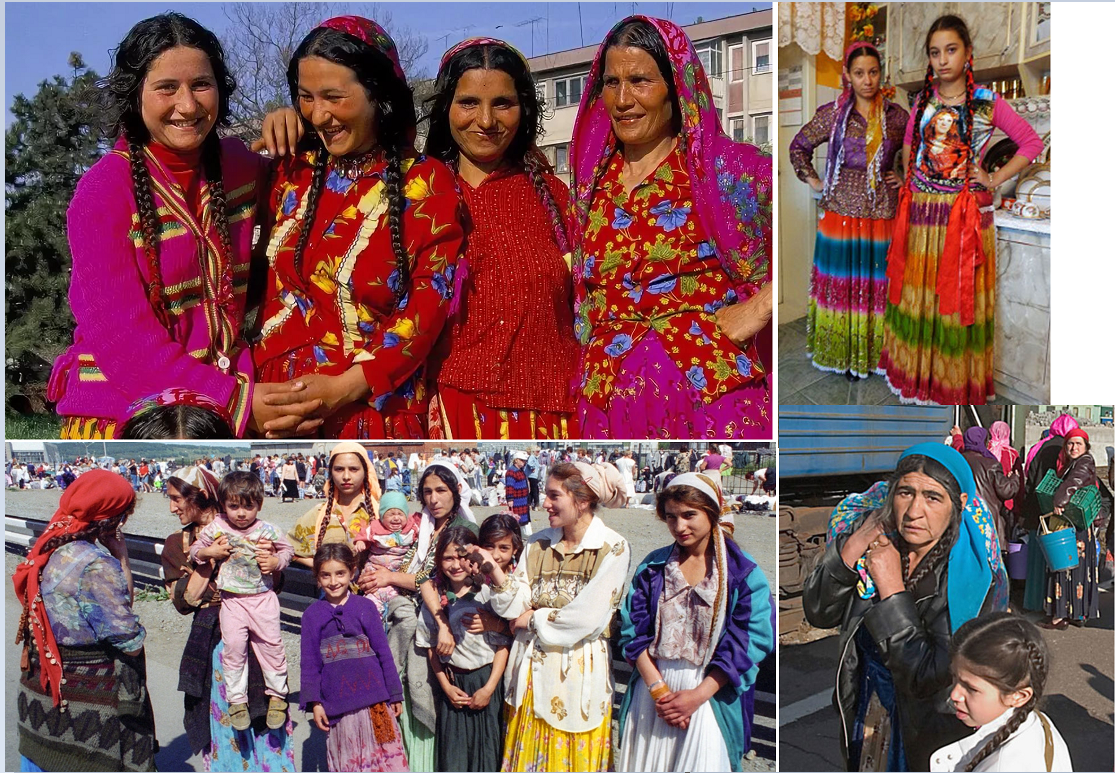More about the Romani Traditions & Social Structure
SOCIAL STRUCTURE (example from original social structure from among the Roma in Slovakia):
- Ethnicity/Nation: Roma
- Tribe: Servika/Kherutna/Slovačika Roma (I'll later refer to this tribe as 'Servika Roma' only, as it is oldest name of this tribe)
- Clan: Clans within a tribe, very similar to Indian Gotra
- Caste (we don't use this word): there are often various castes within a tribe, in India it is known as a Jāti. The castes among the Roma are divided into the Ritually Clean and Ritually Unclean castes.
Also, among the Roma exists own version of the Nobility that includes:
- Kings
- Barons/Grófs
- Vajda
Role of Vajda is (was) among the Servika Roma as a authority similar to the one of the Krisake Roma (Romani Kris is similar to the Panchayaat in India, but among the Servika Roma Romani Kris doesn't exist anymore).
Barons or Grófók often rule over own Clans, some over own Village only.
Vajda, Barons and Grófs often wear normal clothes, often European full suits and some more traditional wear "Gypsy Clothes".
The Kings often wear clothes similar to what were wearing European Kings in the Medieval Era, as well they wear the Crown, Sceptre and Stavroforos Sphaira.
ROMANI KRIS (Romani Court):
The Romani Kris is similar to the Panchayaat in India.
Krisake Roma (members of the Romani Kris) often co-work with the Barons and Kings.
The Romani Kris is caring about Traditions of the Roma, as well to Settle the Problems within a Community.
Krisake Roma are the Judges and often debate about the particular Problem within the Tribe (or a Community) of the Roma who see them as a Authority, they after reaching some agreement deliver a Verdict.
The Verdict may be a financial penalty (a fine) or even expulsion from the Tribe. After the expulsion one became Outcasted.
As I mentioned before, among the Servika Roma, the Romani Kris institution was abandoned a long time ago. Its place took the Vajda, who was a Authority over various communities of the Servika Roma and over the Grófs. But Vajda never claimed to be a King.
SOME TRADITIONS (which reflect believes that I didn't mentioned in an article about the believes):
- GOLD: The Gold (Somnakai/Sonika/Sovna/Sovnakai) is a huge part of the Tradition among many Romani tribes. The Roma believe in a magical force of Gold and wear it as Protection from Evil Forces. Of course other role of Gold is to show Power & Wealth. Among some tribes it´s a future Husband's duty to make to his Wife-to-be golden tooth.
So why do Roma men wear Earrings (unfortunately to a lesser extent today)?
There are several reasons, one is that it confirms masculinity, another is that it shows status (the bigger the earring, the higher the status in the Romani society - among the Romani barons, earrings were very big). Probably both reasons are true.
In the Indian society the Earring worn by the men have various meanings (which often overlap with the Romani viewpoint). Indian men wear the Earrings as a symbol of courage and strength, as well as a symbol of devotion to the deities and as a protection against negative forces.
I will also add that we say earrings "e Čhen", in the plural "Čheňa", in Nepali, Maithili and some dialects of Hindi it is "jhumka" ("Jh" changed to "Čh" in Romani, similar to the word for language "Jhibh" to "Čhib"). ("Čh "read as "Chh" and "Ňa" read as "Nya")
- DECENT DRESSING CODES (in both, Men & Women): In among Conservative (Traditional) Roma groups you can find only women who wear the Scarf (Khosno) and long Skirts (Coxa), which are reaching the Ankles or even go under the Ankles. Also, the men always wear the Trousers which are at least covering the legs to under the knees, if no whole legs till ankles and often a hat on the head. In more modern Roma groups you can still see women wearing long Skirts or some other feminine Dress and men wearing long Boxers (if no Trousers or Sweatpants).
You may also see women with naked belly, yet this isn't indicative of indecency; rather, it's a facet of the original Indian culture, of which Romani culture is an integral part.
- LONG HAIR (among Women): It is a part of the Culture and indicates traditional viewpoint of the woman, Women with long hair are seen as decent who are indicating their honour and showing honour of their families. If a woman does something against tradition and honour, her hair is cut by the family. Traditionally the Kalderaš women braid their hair.
- MOUSTACHE or sometimes FULL-BEARD: Among the men Moustache used to show masculinity and might. Same goes for Full-Beard. Moustache tradition probably comes from India.









Comments
Post a Comment